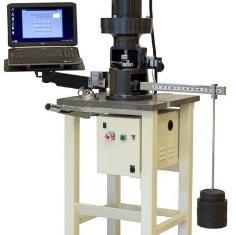Still trying to find my perfect grease for ball joints and tie rod ends. CRC and Lucas Red and Tacky are 60 rated. Green grease is 80.
How important is the 20 more n this application?
How important is the 20 more n this application?

Thanks for that information. Very interesting. Over 5 years ago I found a document while perusing the Timken site that stated too high of a Timken OK Load rating could be detrimental for bearings, without stating what that level might be. I cannot find that document anymore.
I always wonder if the Timken OK Load rating of 80 on Mystic JT6 High Temp Grease is too high, since most bearing greases are in the 50 to 60 range. The JT6 seems to have excellent characteristics for a lithium complex grease.
No idea how green grease rated that high. I tried it once and didn't like it. Too buttery like for my liking, doesn't stick just runs outStill trying to find my perfect grease for ball joints and tie rod ends. CRC and Lucas Red and Tacky are 60 rated. Green grease is 80.
How important is the 20 more n this application?
The 707L that shipped out of Oil City was made made by Battenfeld in Buffalo. After delivering oil to the Pennzoil warehouse in Tonawanda, truckers would often pick up a load of grease to take back to Oil City.While I cannot give you an answer, my all time favorite grease was Pennzoil 707L grease. I knew many mechanics over the years who swore by it (and not at it). I do not know when Shell discontinued it, but Peak must have purchased the formulation as their High-Temp Red Grease appears to be a clone of the Pennzoil 707L when comparing Product Data Sheets.
Also, in the 1970s, when I was in high school and early college, I worked for the Pennzoil distributor in my hometown and we could not keep the 707L grease in stock.
If you do, please let us know what you think.Thanks for the information Scuder! I'm down to my last 1 pound tub of 707L and use it sparingly, but since I discovered the Peak product, I jut might give it a try!
My all-time favorite for auto, outdoor power equipment, and marine is Chevron Delo EP #2. Mystik JT-6 Hi Temp is a very close second.Still trying to find my perfect grease for ball joints and tie rod ends. CRC and Lucas Red and Tacky are 60 rated. Green grease is 80.
How important is the 20 more n this application?
